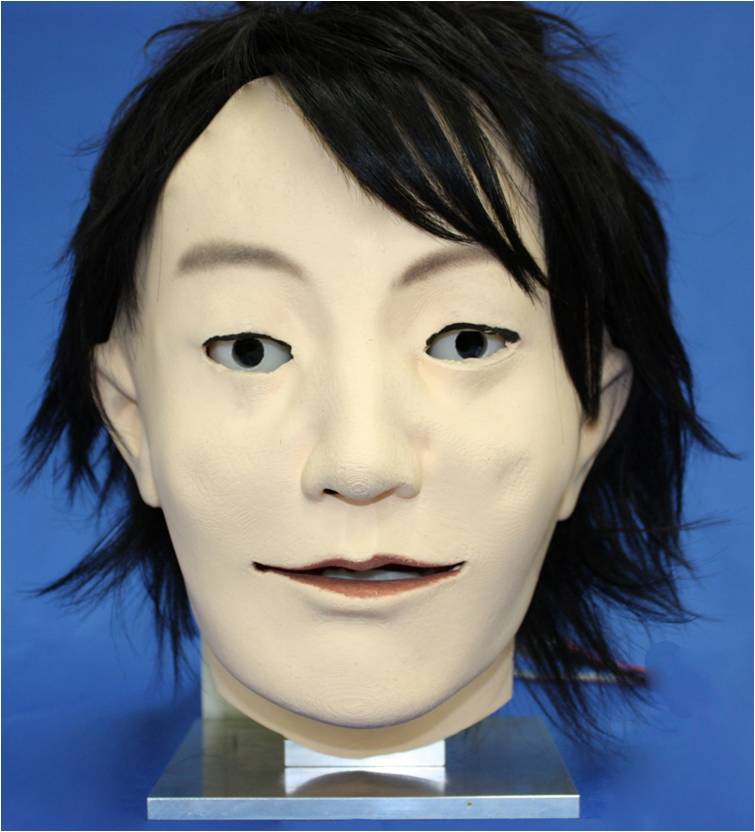
WKH-1
(Waseda Kyotokagaku Head-No.1)
1. Introduction
Cranial nerve system is composed of twelve pairs of nerves. It is an important constituent part of human neurological system. All the sub parts of the cranial nerve system are responsible for particular functions such as smell, vision, facial movements, eye movements etc. As one part of neurological examination, cranial nerves examination is performed to early diagnose the sickness on the pathway of cranial nerve system. Different patients’ symptoms indicate different kinds of nervous system problems. Cranial nerves examination can help the doctor to identify which kind of neurological deficits the patient have or where the abnormalities are localized.
In order to fluently performance the examination, it requires not only abundant medical knowledge but also adept skills. All the medical students, especially the novices need to be trained and master the necessary knowledge and diagnosing methods. In the traditional way of education, firstly, the trainee will systematically learn on the theory knowledge from books. At the same time, the video relative to the symptoms and diseases is also shown to the student. Although this common education method provides the student abundant knowledge and makes them have a good understanding on the physiological relationships of the nervous system, the student can not get the same practical experiences as performing with the real patient.
With the developing of robotic technologies, more and more training simulators focusing on medical skills practicing were developed. Robotics is wildly used in these platforms. Practicing on the simulators, the trainees can enhance their skills quickly. In the simulators, various sensors are embedded in the robot to collect and feed back the operation information of trainees. They provide an objective assessment based on the quantitative information of the trainee’s performance.
Then, we started to develop the whole body patient robot.
In 2011, as the first step towards the whole body patient robot,a humanoid head system for training of cranial examination, named as WKH-1(Waseda Kyotokagaku Head No. 1).
▲Top page
2. Mechanism
People form the expression,using the various muscles including the 11 major species.
We modeled M. frontal, M. orbicularis oculi, M. levator labii sup, M. zygomaticus minor, playing key roles
in the expressions;raise eyebrows,close eyes tightly,show upper and lower teeth.
Fig.1 is the mechanism we manufactured based on the model.
3. Movement
The movements of WKH-1 are below.
健常者 額にしわを寄せる |
|
疾患者(右顔面麻痺)額にしわを寄せる |
|
健常者 口角を上げる |
|
疾患者(右顔面麻痺) 口角を上げる |
|
健常者 眼を固く閉じる |
|
疾患者(右顔面麻痺) 眼を固く閉じる |
|
